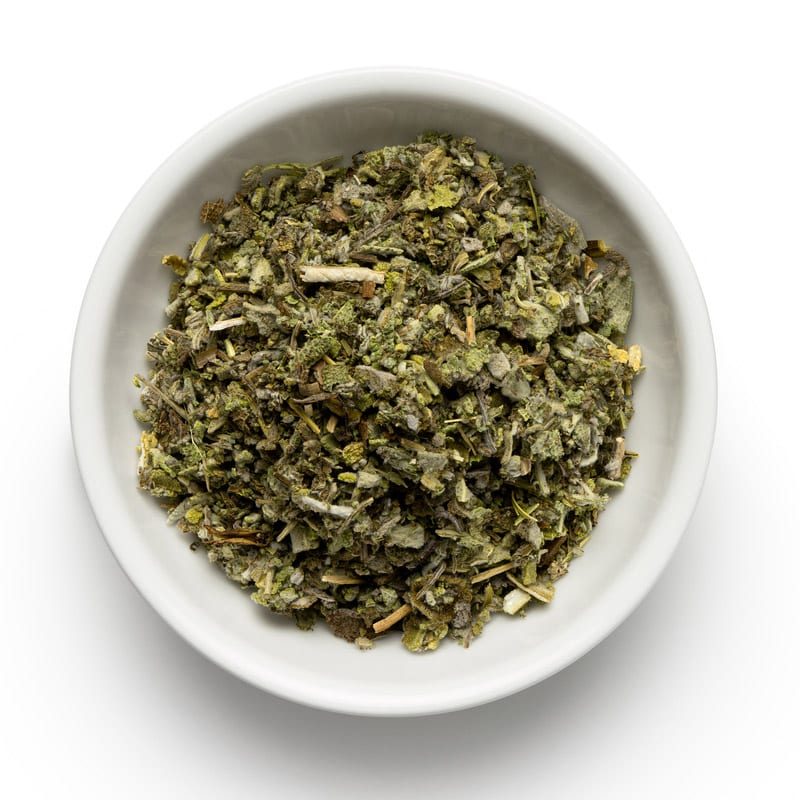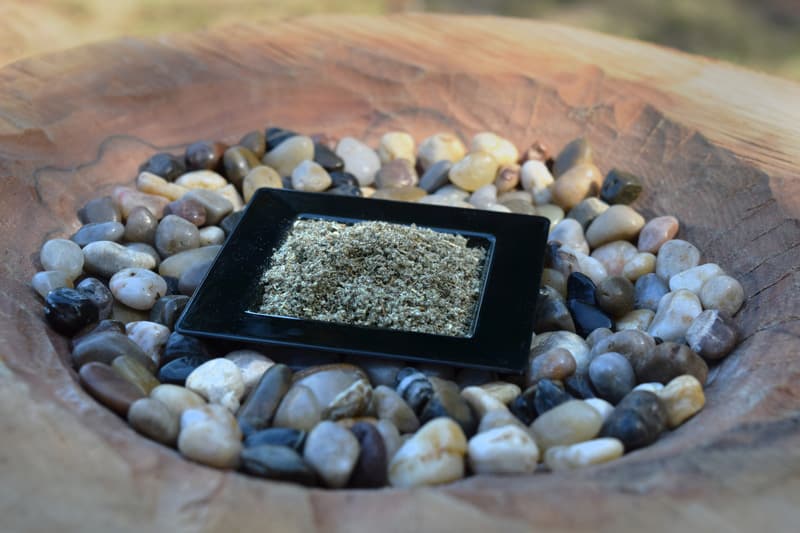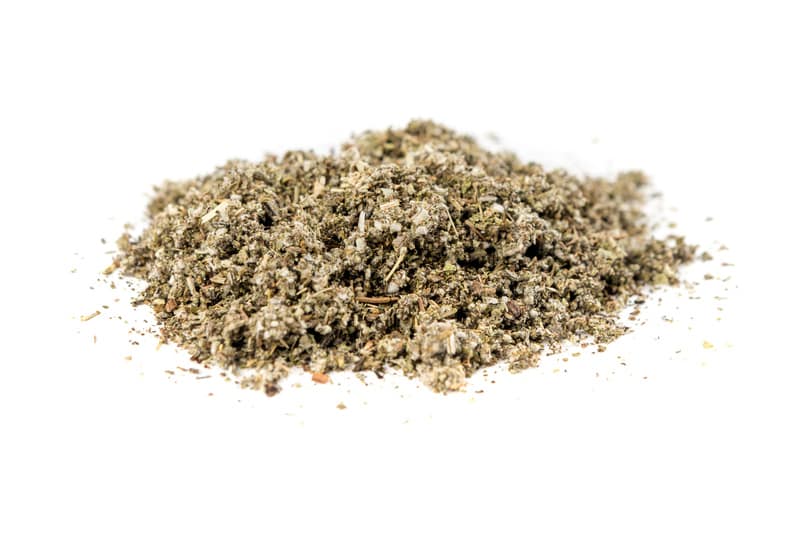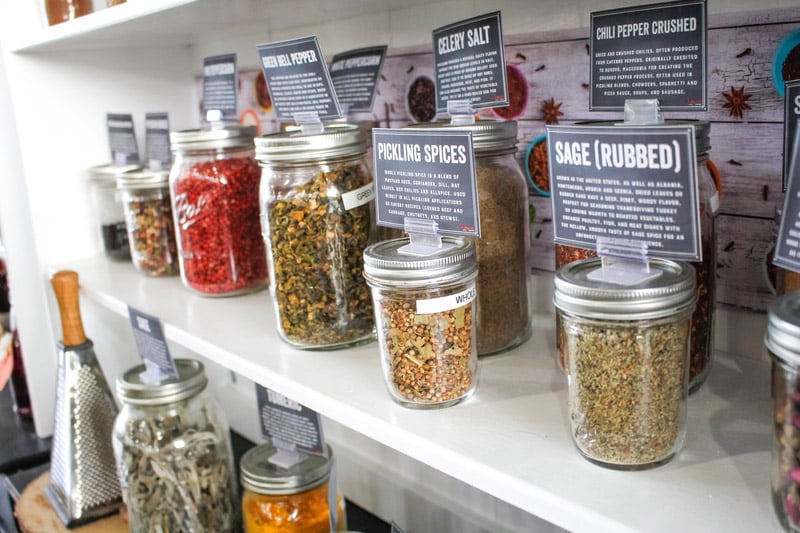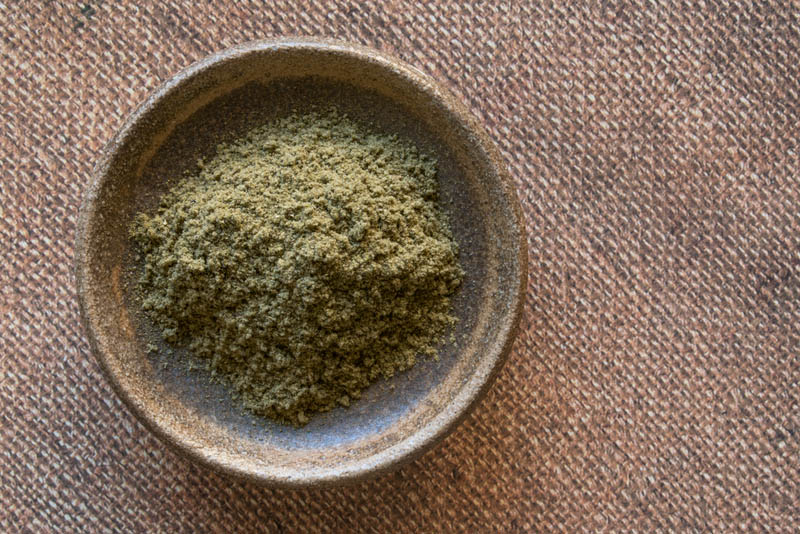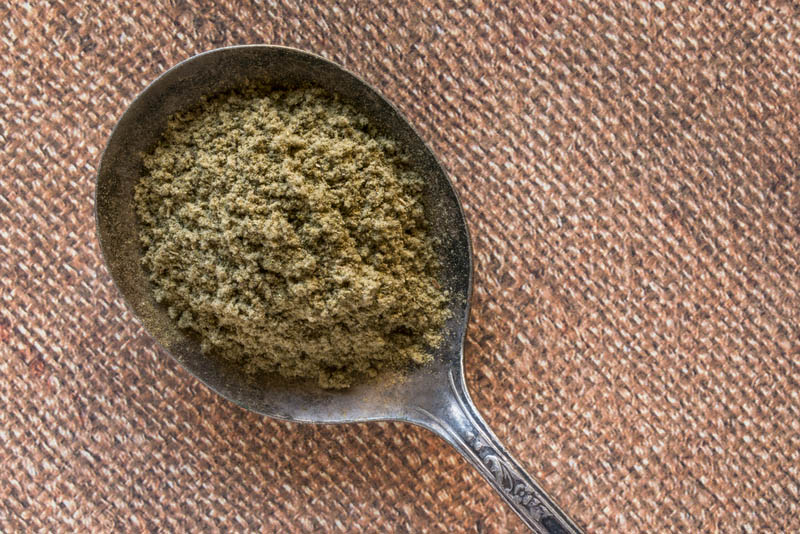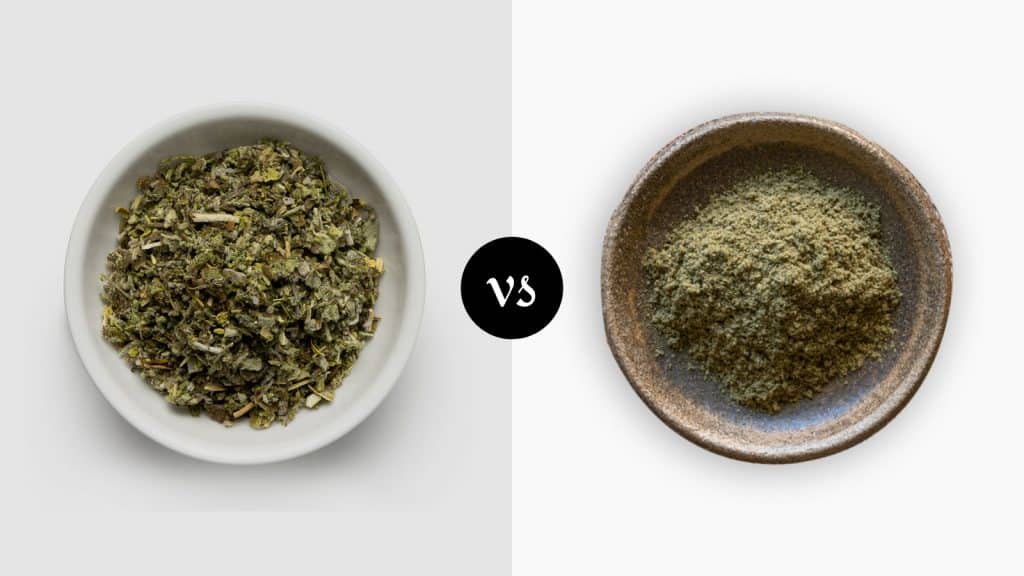
Sage is a member of the Salvia genus of the mint family and is scientifically termed Salvia officinalis. Known by countless names and grown and sold in many different forms, sage boasts just as many culinary and medicinal uses.
Whether fresh, dried, ground or powdered, sage is a must in every kitchen. Sage only blooms mid-summer, growing to roughly two feet tall when granted enough space, with a massive three feet of width occupied.
While fresh sage can be challenging to find unless you grow your own, dried sage is readily available throughout the year. Out of the two main varieties found, many run into confusion concerning which is the better option to use.
We’ll be taking you through a comprehensive comparison of rubbed vs. ground sage so that you always make the right choice for whatever you may be cooking.
Rubbed Vs. Ground Sage Comparison
| Rubbed Sage | Ground Sage | |
|---|---|---|
| Definition | Mildly Flavored Seasoning Powder Made From Rubbed Whole Dry Sage Leaves Only Excluding The Stem | Boldly Flavored Seasoning Powder Made From Powdered Sage Leaves And Stems That Offers Full Depth Of Flavor Inclusive Of Prominent Woody & Bitter Notes |
| How It Is Made | Large Sage Leaves Soaked, Rinsed, Dried Then Rubbed Together Against Each Other To Form Powder While Discarding Stalks | Mature Sage Leaves Soaked In Water Then Dried Or Dehydrated Then Crushed (Including Stems & Leaves) To Powder |
| Flavor | Mild Sage Flavor, Low Earthines, Prominent Sweetness With Pine, Fragrant Aroma And Woody Taste With No Bitterness | Intense Herbaceous Woody Sage Flavor With Floral & Bitter Undertones Carrying Flat earthy Base Taste With Hints of Citrus, Mint & Lingering Peppery Piney Aftertaste |
| Consistency | Ultra-Fine, Fuzzy Appearance & Feel | Ultra-Fine Fluffy Powder |
| Best Uses | Texture & Flavor With Sweetness But No Bitterness | Excellent In Stuffing, Italian & Greek Dishes | Pairs With Poultry, Fish, Game And Red Meat | Meals That Need The Fullest, Strongest Sage Flavor |
| Equivalency | 1 Teaspoon Rubbed Sage = 1/2 Teaspoon Ground Sage - 1 Tablespoon Fresh Finely Chopped Sage | 1 Teaspoon Ground Sage = 2 Teaspoons Rubbed Sage = 1 Tablespoon Fresh Finely Chopped Sage |
| Shelf Life | 2 Years, Use Within 6 Months Recommended | 4 Years | Small Quantities At A Time Recommended |
Rubbed Vs. Ground Sage
Never find yourself staring at the herbs and spices in a store without being able to decide which you need between rubbed vs. ground sage again by going through our in-depth overview of both tasty choices.
Rubbed Sage
With a mild flavor that’s subtly sweet instead of herbaceous, woody, and slightly bitter, rubbed sage is the go-to choice for many chefs. Here’s a breakdown of rubbed sage, its flavor, and everything you need to know to decide when it’s the best pick.
Definition
Rubbed sage is a seasoning powder made by rubbing whole dried sage leaves, which causes them to disintegrate and form a light, fluffy powder with mild sage flavor. Unlike ground sage which is crushed without rubbing, rubbed sage is powder from the leaves only, not the stem.
How Rubbed Sage Is Made
Making rubbed sage at home is easy. Simply select the largest fresh sage leaves possible. A few marks here and there won’t make that much of a difference. Soak the sage for an hour or two to make sure all bacteria is cleaned away.
Give it a good rinse, and then play the leaves out to dry on paper towels. Either allow the leaves to dry out naturally, which can take hours to weeks depending on the heat and humidity; otherwise, dry the leaves in the oven or use a food dehydrator.
The easiest way to make a small quantity is to rub the dried sage leaves against each other between your palms and then catch the dust that forms in a plate or bowl below.
Alternatively, to make a significant amount at a time, place the leaves into a colander with a bowl beneath it to catch the rubbed sage dust. Use your fingertips to rub the sage against the bottom of the colander lightly and continue rubbing until all the sage has dissipated into powder.
Discard the stalks and store the rubbed sage.
Flavor
Rubbed sage is far milder in flavor than ground sage. There’s less earthiness but slightly bolder sweetness to its piney, fragrant woody flavor with absolutely no bitterness. Opt for rubbed sage when you’re not sure of how prominent the sage flavor in your recipe should be.
It’s the safer, more versatile choice.
Consistency
As a powder produced from the leaves that don’t include the stalks or raw leaf fibers, rubbed sage has an ultra-fine consistency that’s so minuscule and smooth that the powder takes on a fuzzy appearance and feel.
Despite containing the whole leaf, ground sage is still ultra-fine with a consistency that’s smoother than salt and comparable to powder-like turmeric or ground black pepper.
Best Uses
Opt for rubbed sage whenever you want to add both texture and the flavor of sage to a meal. It is also the best choice when you’re looking for the sweetness and earthy herbaceous taste of sage without any bitterness. For this reason, rubbed sage is used extensively for making stuffing.
It’s also the variety of choice for Italian and Greek dishes and works wonderfully for infusing flavor into all types of poultry, fish, game, and meat.
Equivalency
Rubbed sage is an excellent substitute for fresh sage, especially when you’re looking for the sweetness of sage but none of the off-bitter woodiness.
A teaspoon of rubbed sage is roughly equivalent to half a teaspoon of ground sage while offering similar intensity to a tablespoon of fresh, finely chopped sage, so substitute accordingly.
Shelf Life
When stored in a cool, dry, dark place in an airtight container, rubbed sage can last up to two years. However, most rubbed sage begins to lose flavor from a year onward. We advise only making enough homemade rubbed sage to last six months in order to preserve the best quality possible.
The same goes for buying rubbed sage. Stick to small quantities as it’s not something you use often nor a lot of at a time.
Ground Sage
Depending on what type of cuisine you grew up around, ground sage is likely a favorite that’s come a long way. There’s a surprisingly broad variety of recipes that call for the bittersweet, aromatic seasoning of ground sage, and nothing quite like it in terms of its unique flavor.
Let’s take a closer look at ground sage and its defining characteristics.
Definition
Ground sage is boldly flavored herb powder used as seasoning that’s made from the leaves of sage inclusive of their stems. Entire sage leaves are ground down into an ultra-fine powder that supplies the plant’s full, intense depth of flavor, inclusive of woody and bitter notes.
How Ground Sage Is Made
Large, mature sage leaves are harvested and then soaked in water to clean them and remove all traces of bacteria. The leaves are then left to dry and either dehydrated naturally in the sun or using an oven or food dehydrator.
Once dry, the leaves and stems are crushed together using either a mortar and pestle, herb grinder, or blender until an ultra-fine powder is attained.
Flavor
Expect the intense, herbaceous wood flavor of sage with floral and bitter undertones blanketing the sweet, savory taste. The best way to describe the taste of sage is a flat earthy base flavor with rich, sweet notes with hints of citrus, mint, and a peppery piney aftertaste that lingers.
Consistency
All ground sage is ground to an ultra-fine powder with a cornflour-like consistency. Ground sage is so fine that it gains a fluffy-like quality. The fluffiness makes the powder appear to stick together as it is poured from one vessel to another but does not exhibit the fuzziness of rubbed sage.
Best Uses
Opt for ground sage when you want the fullest, boldest sage flavor with hints of bitterness. It can be used in everything from soups and stews to ribs and salads. Many combine ground sage with freshly muddled sage when looking for the greatest intensity of flavor.
Ground sage is used in yogurt and curries and is famously consumed with fresh Greek yogurt. It is also a fantastic herb for marinating turkey, chicken, and other poultry. Try ground sage with caramelized onions to sample a beloved delicacy enjoyed by many.
A little ground sage adds the perfect flavor to beef sausages and is amazing when sprinkled on top of pizza, resisting the heat better than powdery rubbed sage.
Equivalency
Ground sage has a far more prominent flavor than rubbed sage. As a result, a teaspoon of ground sage is roughly equivalent to two teaspoons of rubbed sage. Those substituting ground sage for fresh sage should only add a third of the quantity called for by the recipe for a matching intensity.
Shelf Life
When correctly stored, ground sage can last for up to four years. We advise that you aim to store ground sage for no longer than two years as it typically begins to lose a noticeable degree of intensity from this point onward.
Despite the long shelf life, it is far better to buy small bottles of ground sage as it’s an ingredient that isn’t used frequently, nor in great quantities.
What Is The Difference Between Rubbed Vs. Ground Sage?
The main difference between rubbed and ground sage is that rubbed sage is an ultra-fine powder made from rubbing the dried sage leaves alone, whereas ground sage is still fine but coarser due to being the entire leaf and stem of Salvia officinalis ground up.
Ground sage is stronger with a slight bitterness that isn’t present in rubbed sage.
Which Is The Best, Rubbed Vs. Ground Sage
Sage, in all of its forms, is rich in nutrients with high levels of antioxidants. Give sage tea brewed from ground sage a try for an immunity-lifting treat.
Sweeten it up with honey or combine it with another strong-scented blend like jasmine tea, and you’ll have a use for sage that you’ll keep coming back to. Want something slightly milder without the touch of bitterness? Use rubbed sage instead.
There is no clear winner between rubbed vs. ground sage. Both are outstanding herbs that, despite being interchangeable, offer excellent versatility thanks to their varying potency of flavor.
